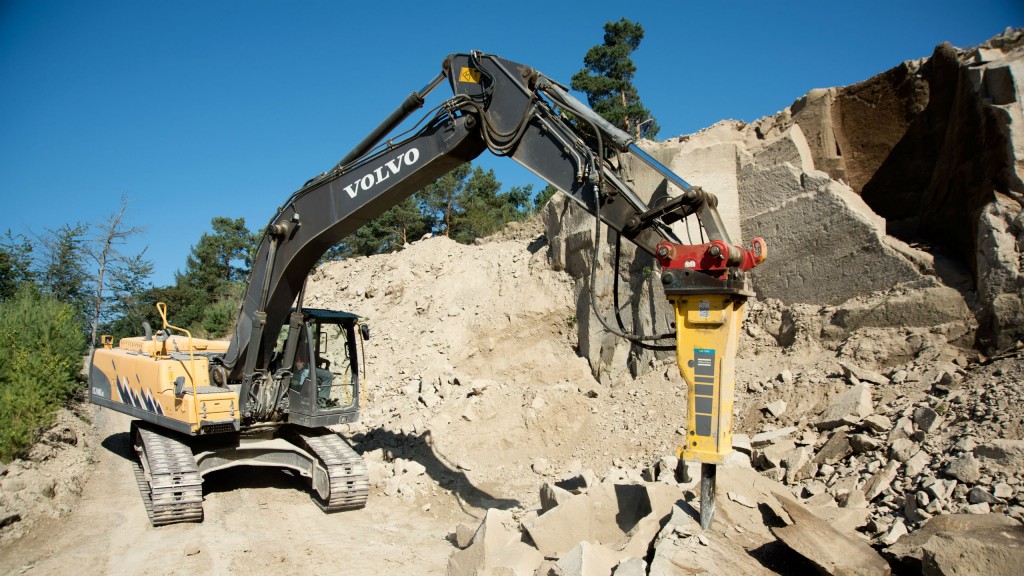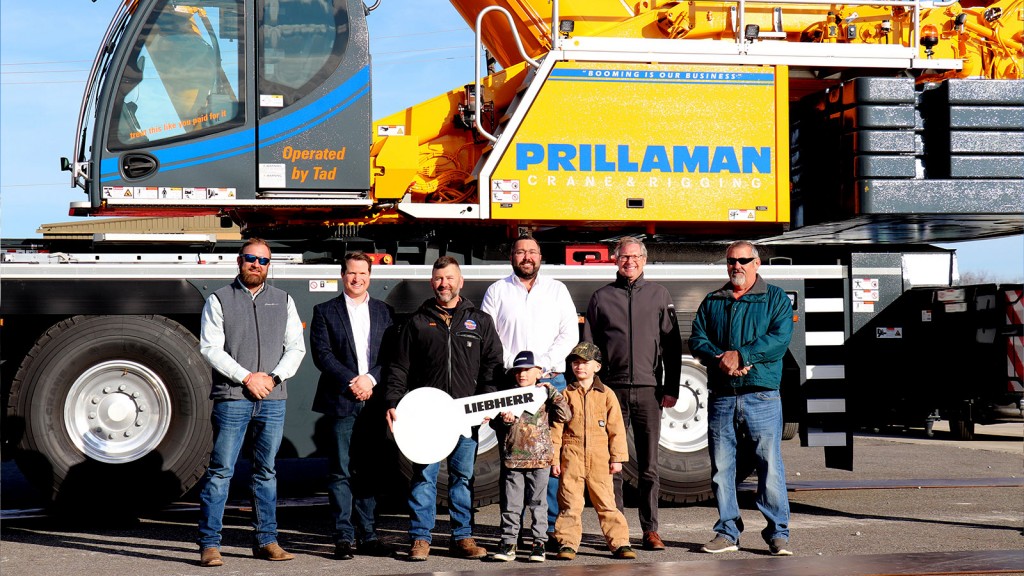New MB 1650 hydraulic breaker, lower weight, same high performance

An ongoing aim for Atlas Copco has been to assist customers to reduce their operating costs and the new MB 1650 hydraulic breaker is a typical example. Replacing the MB 1700, the MB 1650 is lighter and more compact yet gives the same high performance as its predecessor. The new design offers higher reliability, lower repair costs and easier accessibility for maintenance. Weighing in at 1,650 kg, the new MB 1650 hydraulic breaker is suitable for carriers in the weight class 19-32 t. A redesigned service window offers greater accessibility and thus makes the attachment more maintenance friendly. With no high-pressure accumulator the MB 1650´s maintenance and repair costs are lower.
Breaker performance is optimized by AutoControl, an automatic piston stroke length switching system, which adjusts the output balance between impact energy and rate during operation. Atlas Copco´s Energy Recovery feature automatically utilizes the piston recoil energy to increase the performance, without additional hydraulic input, and to lower vibrations. The integrated Start Select valve enables the operator to adjust the hydraulic breaker start-up behaviour according to the operating condition in a few simple steps.
The MB 1650 is equipped with ContiLube™ II, a self-bleeding automatic lubrication device for optimized grease consumption and continuous lubrication. Low noise and vibration levels Noise and vibration levels on the MB 1650 are minimized by the Vibro Silenced Plus system, utilizing non-metallic suspension arrangements to isolate the percussion mechanism from the breaker box and sealing all openings for lower noise and vibration levels.
An optional, patented dust sealing system called Dust Protector II will extend the service life of the components and reduce grease consumption. The built-in check valve reduces dust intake into the tool guiding area and the percussion chamber.
The new MB 1650 hydraulic breaker is an efficient choice for a broad spectrum of applications in mining and quarrying, demolition and renovation, construction, and the metallurgical industry.



